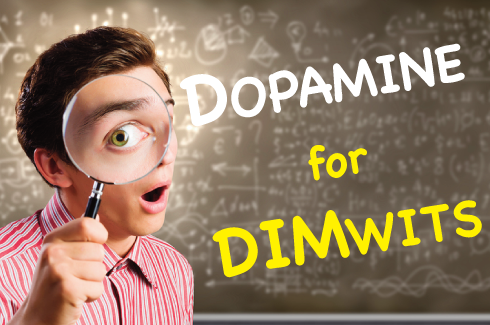Inviting the pain
“Unk, old friend – almost everything I know for sure has come from fighting the pain from my antenna, said the letter to Unk. Whenever I start to turn my head and look at something, and the pain comes, I keep turning my head anyway, because I know I am going to see something I’m not supposed to see. Whenever I ask a question, and the pain comes, I know I have asked a really good question. Then I break the question into little pieces, and I ask the pieces of the questions. Then I get answers to the pieces, and then I put the answers all together and get an answer to the big question.
The more pain I train myself to stand, the more I learn. You are afraid of the pain now, Unk, but you won’t learn anything if you don’t invite the pain. And the more you learn, the gladder you will be to stand the pain.” – Kurt Vonnegut
In his novel, The Sirens of Titan, Vonnegut’s Unk never figures out he wrote the letter beseeching him to endure the pain triggered by an implanted antenna. Unk was an earthling recruited into the Martian army where antennas kept soldiers from thinking about the physical devices enslaving them.
DIMwits don’t require external devices to keep us from figuring out we’re slaves to a brain chemical because, like Unk’s antenna, the hormone makes it too painful to notice or consider the obvious.
Thinkers
”Think left and think right and think low and think high. Oh, the thinks you can think up if you try!” – Dr. Seuss
Visionaries, philosophers, mystics, poets, playwrights, authors, satirists, geniuses, and children’s book writers have been thinking, complaining, debating, and writing about dopamine-induced madness (DIM) for centuries. Marc Twain was describing dopamine-determined behavior and homeostasis when he wrote “the human being is merely a machine, and nothing more, driven by the singular purpose to satisfy his own desires and achieve peace of mind.”
What’s especially impressive is how so many great thinkers, who knew nothing about neurotransmitters, diagnosed a disease that continues to elude scientists, despite countless studies linking dopamine to a long list of other pathological disorders, including autism, schizophrenia, Parkinson’s disease, ADHD, psychoses involving delusions and paranoia, and every acknowledged addiction.
Not a joke.
“Orthodoxy: That peculiar condition where the patient can neither eliminate an old idea nor absorb a new one.” – Elbert Hubbard
To primitive brains, programmed through natural selection to avoid life-threatening choices, pain is pain. Expectations of certain pain keep us from thinking dopamine-repellent thoughts, (e.g., how brain chemicals are doing our thinking for us). The brain doesn’t distinguish between pains inflicted by sticks, stones, humiliation, or rejection. Which is why studies show that psychological abuse can be more devastating than sexual and physical abuse.
It doesn’t matter if psychological pain won’t break bones or leave visible scars, it can and does cripple lives.
To the detriment of all, the same programming keeping lower animals avoiding physical pain keeps us frantically avoiding imagined threats to safety, approval, or status, such as considering dopamine-repellent information peers might find too threatening to discuss.
In other words.
“So, first of all, let me assert my firm belief that the only thing we have to fear is…fear itself — nameless, unreasoning, unjustified terror which paralyzes needed efforts to convert retreat into advance.” – Franklin D. Roosevelt
Psychological pain is every bit as real as physical pain and yet it’s “all in your head.” Which explains why DIMwits dread rejection, disapproval, being mocked, or looking silly as much as being beaten silly.
Researchers have recently discovered…“Rejections elicit emotional pain so sharp it affects our thinking, floods us with anger, erodes our confidence and self-esteem, and destabilizes our fundamental feeling of belonging.” (From Rejection is more powerful than you think.) Which is why esteem addicts dislike, hate, attack, and avoid threatening information, situations, and individuals.
Amazingly.
“Better to be hurt by the truth than comforted with a lie.”
– Khaled Hosseini
Anyone willing to experience the ‘pain’ associated with honestly addressing D-need addictions quickly discovers how bearable the dopamine-induced pain involving threats to safety and esteem is, especially when compared to being clubbed. As a bonus, understanding how psychological pain isn’t actually real makes it possible to risk additional ‘pains’ triggered by expectations of rejections.
Granted, experiencing the pain triggered by admitting to shortcomings, fears, insecurities, self-deceptions, and addictions to safety, power, acceptance, approval, or status isn’t fun, but it’s an essential first step to unfixing the heisenbug fix that keeps us lost in webs of deceptions.
As Unk explains to himself, we won’t learn anything if we don’t invite the pain and the more pain we train ourselves to stand, the more we learn.
What’s it gonna be?
“Men stumble over the truth from time to time, but most pick themselves up and hurry off as if nothing happened.”- Sir Winston Churchill
Choosing between the dopamine-appealing comfort of living (and dying) as an unconscious slave to the heisenbug fix or risking the dopamine-repellent honesty of fixing the fix is right up there with Neo choosing the red or blue pill.
Now’s a good time to decide if you’re interested in learning more or better off playing a clever dopamine game to dismiss what you’ve read and walk away as fast a possible.






Discussion
Comments are closed.